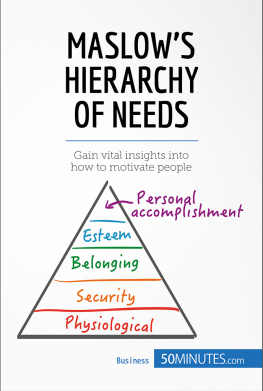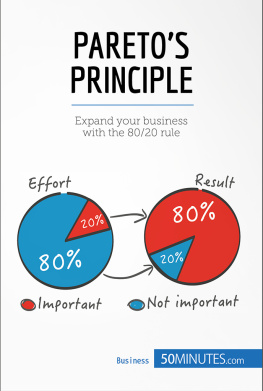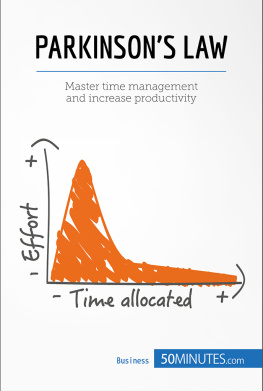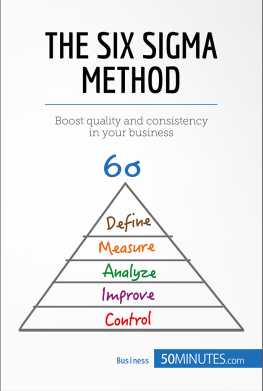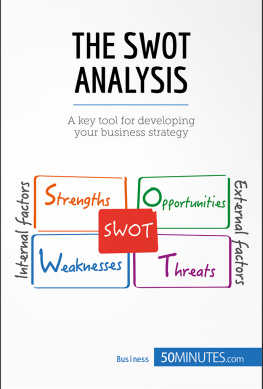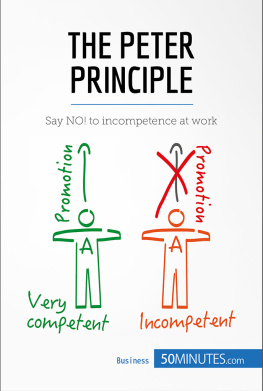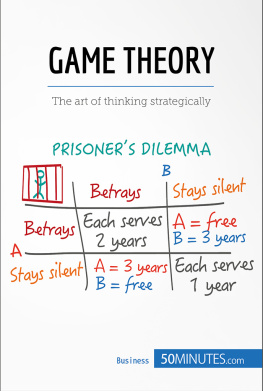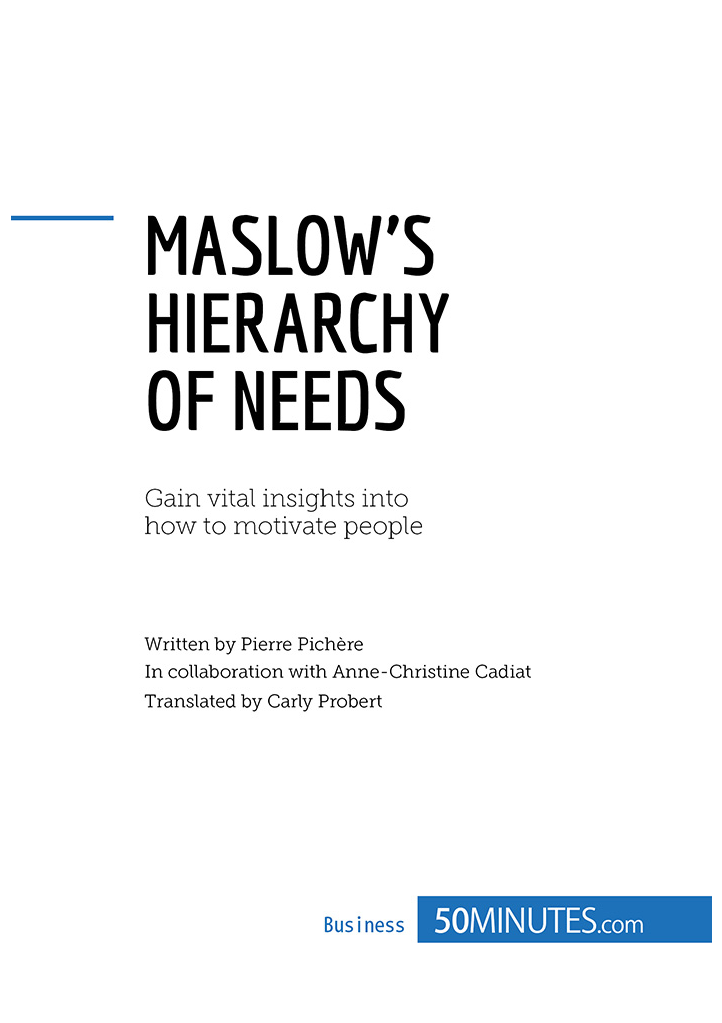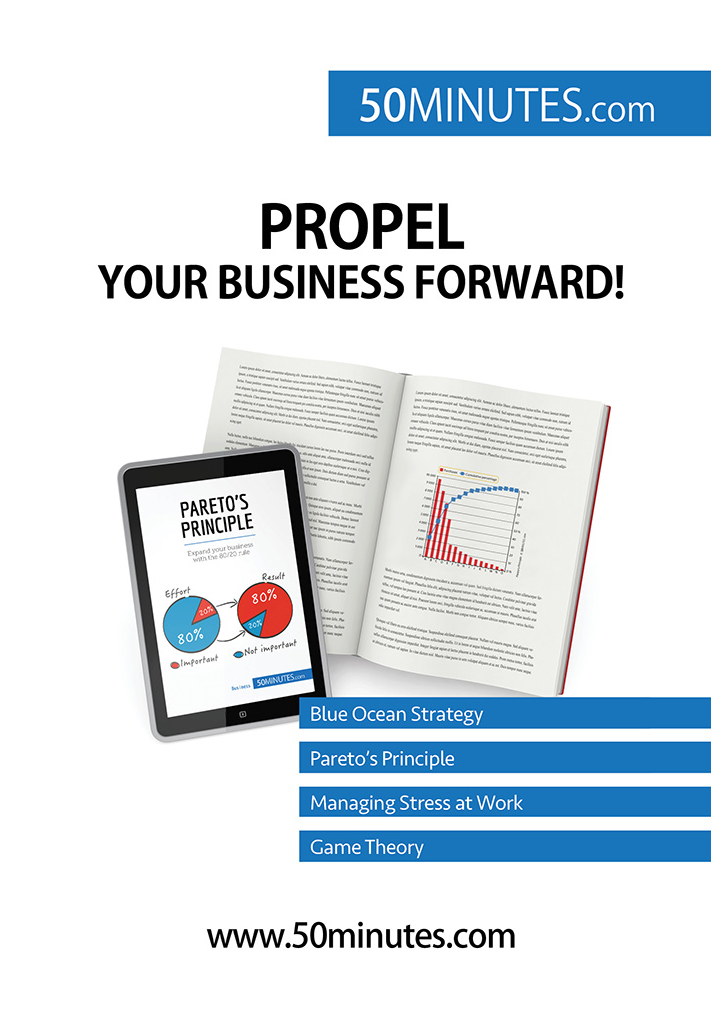Maslows Hierarchy of Needs
Key information
- Name: Maslows Hierarchy of Needs, Maslows Pyramid of Needs.
- Uses: psychology and social sciences (to categorise and prioritise individual needs), marketing and management.
- Why is it successful? It is a dynamic visual representation of needs, including both physiological and spiritual aspects.
- Key words: psychology, needs, Maslow, pyramid.
Introduction
Economic science is the allocation of limited resources according to the infinite needs, motivations and expectations of individuals. But how do you define needs? That is what this pyramid, developed by the American psychologist Abraham Harold Maslow (1908-1970), tries to do.
History
Starting in the 1940s, Maslow, along with Carl Rogers (psychologist, 1902-1987), introduced a new approach to humanistic psychology. In his works, Maslow studied the structure of human needs. His readers and supporters later formalised his theses in the form of a pyramid.
There are five levels of needs:
- physiological needs
- safety needs
- need for recognition
- need for esteem
- need for self-actualisation.
Each of these categories corresponds to human activities. This model has been widely used in economics and in the corporate world, especially in marketing and management. At the end of this study we will see how the economic sector uses the model with an example from the food industry.
Definition of the model
The pyramid of needs, also called Maslows pyramid, offers a model for defining the needs of human beings, from the most basic functions (eating, sleeping, etc.) to the more fulfilling (self-improvement, practicing art or sports, etc.). Maslow was a psychologist, but his model, summarised by a pyramid, has been used in economics and the world of business. It offers a simple and effective way of identifying different needs, as long as they are considered as a whole, not as successive stages.
Theory
Microeconomics naturally concerns the conditions that lead to market exchange. Maslows pyramid is positioned ahead of these conclusions, right at the origin of the demand: needs.
The five levels of needs
Level by level, Maslow brings together various human needs. He does not directly mention a pyramid form, but a hierarchy of importance: as soon as a family is satisfied, other needs appear immediately. As Maslows hierarchy of needs covers multiple areas, including personal development, it is useful to employ the terms used by the author himself in order to understand the essence of the concept.
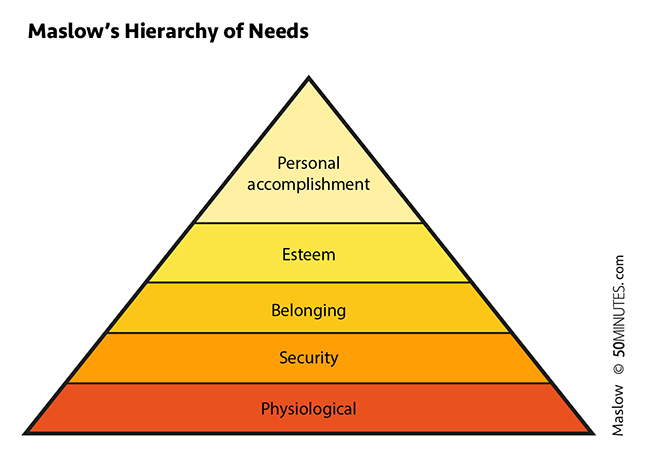
- The first level is that of physiological needs . Eating, drinking, sleeping, breathing, etc., are all functions related to individual survival. Since these are basic, vital needs, they are obviously the most important: they certainly exceed needs for security, esteem, etc.
- Next, safety needs . You might think immediately of physical integrity, but this category is not restricted to that protection against theft and damage also fall under this category. Maslow states that safety needs lead people to prefer what is familiar, rather than the unknown.
- When these two types of needs are met, those related to love, affection or social relations (the need to belong ) appear. This third category takes into account the social nature of the human being.
- This leads to the fourth level of the pyramid, which is the need for esteem or recognition . This category refers to the needs relating to status, employment, power and money that define us in society.
- Finally, at the top of the pyramid stands the need for personal accomplishment . While the needs of the lower levels depend on the perceptions of others, the needs at the top of the pyramid are related to the development of the individuals personality. According to Maslow, these needs can take any form, as long as they match the individual desires of the person. In other words, if I want to be a doctor, for example, a need related to becoming a doctor, such as the need to know how the human body works, appears automatically.
In Maslows theory, you should satisfy the needs of each level, before moving up to the next one. Would someone fear for the safety of their belongings if they had nothing to eat? Would someone care about their social connections while being attacked by a group of looters? What good is recognition from others without being integrated into a social group? And how accomplished can someone feel without good self-esteem? This is therefore a dynamic model, not a strictly hierarchical presentation.
Maslow puts individual development into perspective, assuming that individuals always seek a good quality of life. In reality, needs are not the same for everyone and they also vary over time. Moreover, other types of needs may emerge with varying importance according to the people and the circumstances and coexist alongside those represented in the pyramid.
Needs: from economics to marketing
Compared to the many needs related to social relationships and humans, the need for available goods appears to be very limited. However, economic reasoning is more interested in the utility i.e. the function of an additional unit of a product for the consumer than the need, without prioritising the goods themselves.
The analysis of needs is more concerned with marketing and management. Needs are mostly studied at the level of the company and its market positioning. Psychologists do agree that existential and basic needs are relatively limited, but there is always a need seen as a lack or a desire for the product by the consumer.
Marketers are aware of this and constantly refer to Maslows famous pyramid. Putting a product or service into the pyramid leads us to consider and develop launch strategies that are sometimes very varied. For example, we wouldnt market a staple product as a piece of high technology. It is also possible for a product or service to satisfy different levels of needs; it is then necessary to adapt the message according to the target consumers.
Limitations and extensions
Limitations and criticisms
Like all classic theories in social sciences, the pyramid of needs has been the subject of critical interpretation. Several weaknesses of the model are highlighted, although some are contradictory:
- The lack of nuance in the hierarchy of needs. Some natural functions are more important than others. You can go without eating for several days, but you can only stop breathing for a few minutes.
- The questionable hierarchy. It does not consider the fact that humans are social beings. Can the need to eat really be put above maintaining human relationships or self-improvement? Without food, a person cannot survive. Without sufficient interaction with others, a persons mental state will deteriorate, driving them to madness or even suicide.
- The ethnocentrism of the model. All studies were conducted on Western populations, resulting in an approach that only applies to wealthy, developed civilizations.

